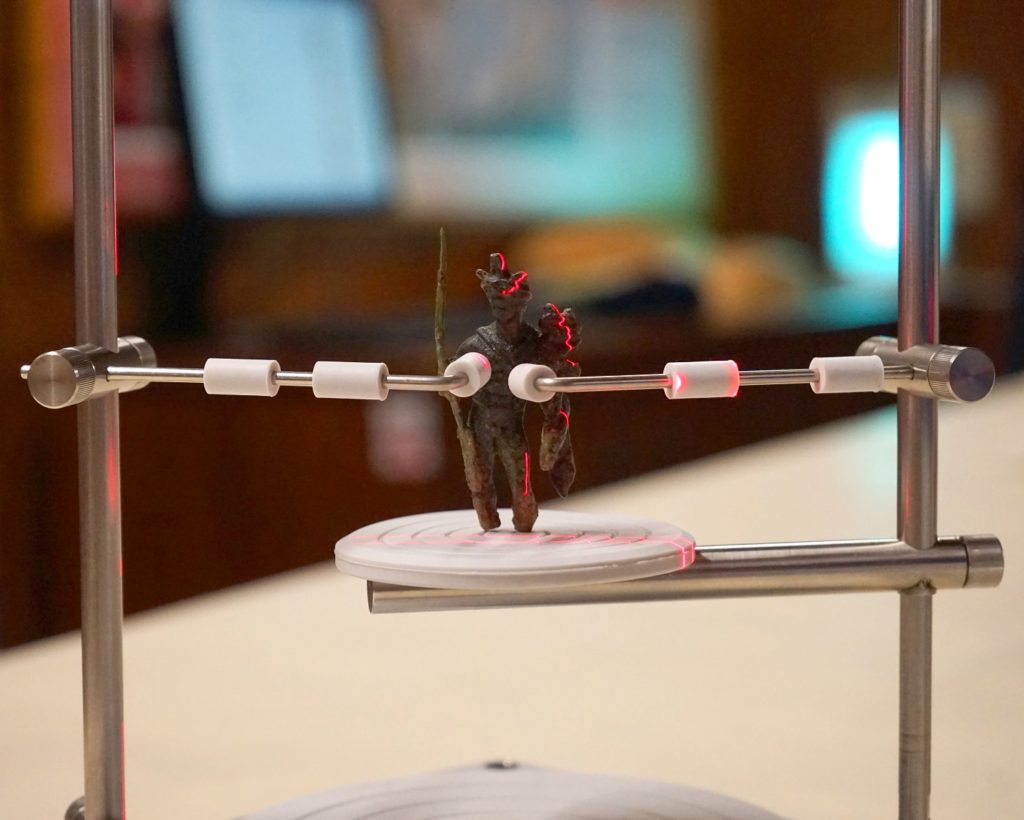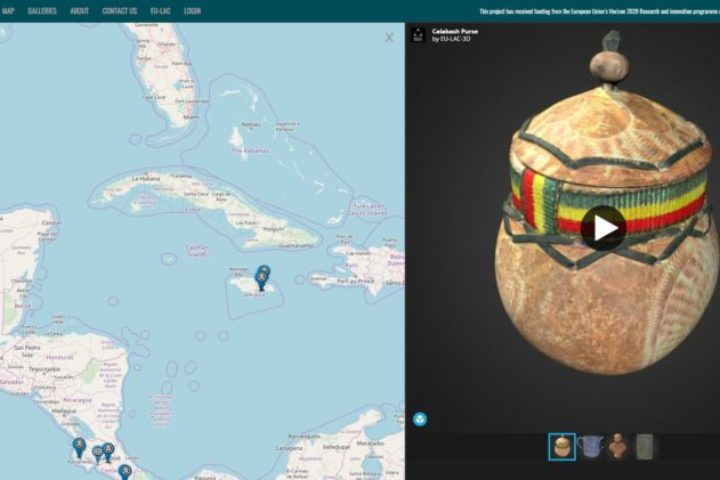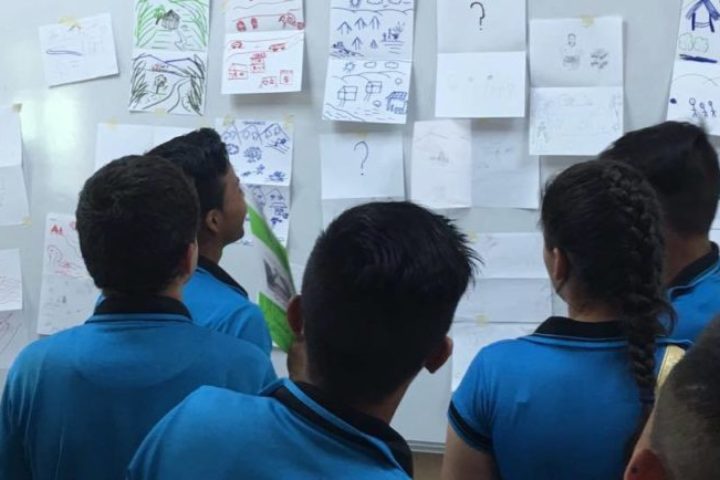Technology has been critical to the success of EU-LAC Museums.
Not only because of the value of social media in communicating between the different countries and creatively disseminating findings across the globe, but also due to the development of a number of educational initiatives that have broadened the scope and impact of the overarching project. Collaboration between the National Museum of Archaeology in Lisbon and the Computer Science Department of the University of St Andrews, Scotland, has resulted in a number of vital and experimental approaches that illuminate the value of technology for museums of all sizes.
The three main areas that have been addressed – in order to achieve the shared goal of learning from and with community museums in Europe, Latin America, and the Caribbean – centered on:
- The creation of a dynamic web portal
- A series of workshops
- A virtual museum
The EU-LAC Museums Web Portal is constantly being updated with new data from the partners, and provides a starting point for anyone interested in the project, outlining the key outcomes and resources developed over the course of the four-year research period. Working with the social media channels of Twitter, Facebook, and YouTube, the team leading the technology work package have sought to share the project’s work as widely as possible. Through a sustained engagement with these platforms, EU-LAC Museums has now been shared with 250 countries.
This is, however, only one aspect of the outreach possibilities enabled by technology. The project has looked to design and utilise existing technologies to assist in defining, articulating, and disseminating heritage. Together with communities and museum professionals in remote areas, computing specialists Alan Miller, Adeola Fabola, Ian Oliver, and Catherine Cassidy developed a teaching programme, including sessions on how to create videos, 3D digital objects, and 360°museum tours.
As part of this, museum staff, alongside community members, selected objects – that correspond to certain logistical criteria – to either be 3D scanned or photogrammatised. These images were then sent through open source software that created a 3D file which were then archived and uploaded to sites such as Sketchfab.
All of these digital objects appear in a video player which can easily be embedded in websites. A booklet explaining the process behind the creation of virtual objects is available for free download from the project website, and the key ideas and programmes have subsequently been adapted for specific community needs. The Barbados Museum and Historical Society, for example, went on to lead a 3D scanning summer school to share the learnings more broadly and to continue the work of developing practical solutions and tools to conserve and teach community heritage.
These images then contributed to the creation of one of the first major project research outputs: a bespoke EU-LAC Museums Virtual Museum. Detailing iconic objects, legends and folk tales, testimonials, areas of archaeological importance, case-studies and community and sustainable museums, individuals can visit remote museums, digitally handle objects and learn about a culture’s distinct traditions and histories from wherever they are in the world. Expanding upon these ideas, a Virtual Museum of Caribbean Migration and Memory has also been created hosting research gathered by the University of the West Indies research team and Barbados Museum and Historical Society, which shares stories of migration and diaspora on an interactive map. Through the collation of objects, narratives, and data on digital platforms, heritage can be preserved, compared, and continuously expanded.

With the rise of digital museum visits as a consequence of COVID-19, the importance of technology for museums has never been so apparent. Technological innovations provide the means to store and detail artefacts of cultural significance and to archive digital assets representing our heritage in case of emergency. While still not available to all, interactive platforms, apps, and virtual museums allow the best means of communication, and in times of separation allow for alternative modes of connection. EU-LAC Museums have provided a template for what will inevitably be a rapidly developing field of study.
This project has received funding from the European Union’s Horizon 2020 Research and innovation programme under grant agreement No 693669.
![]()


